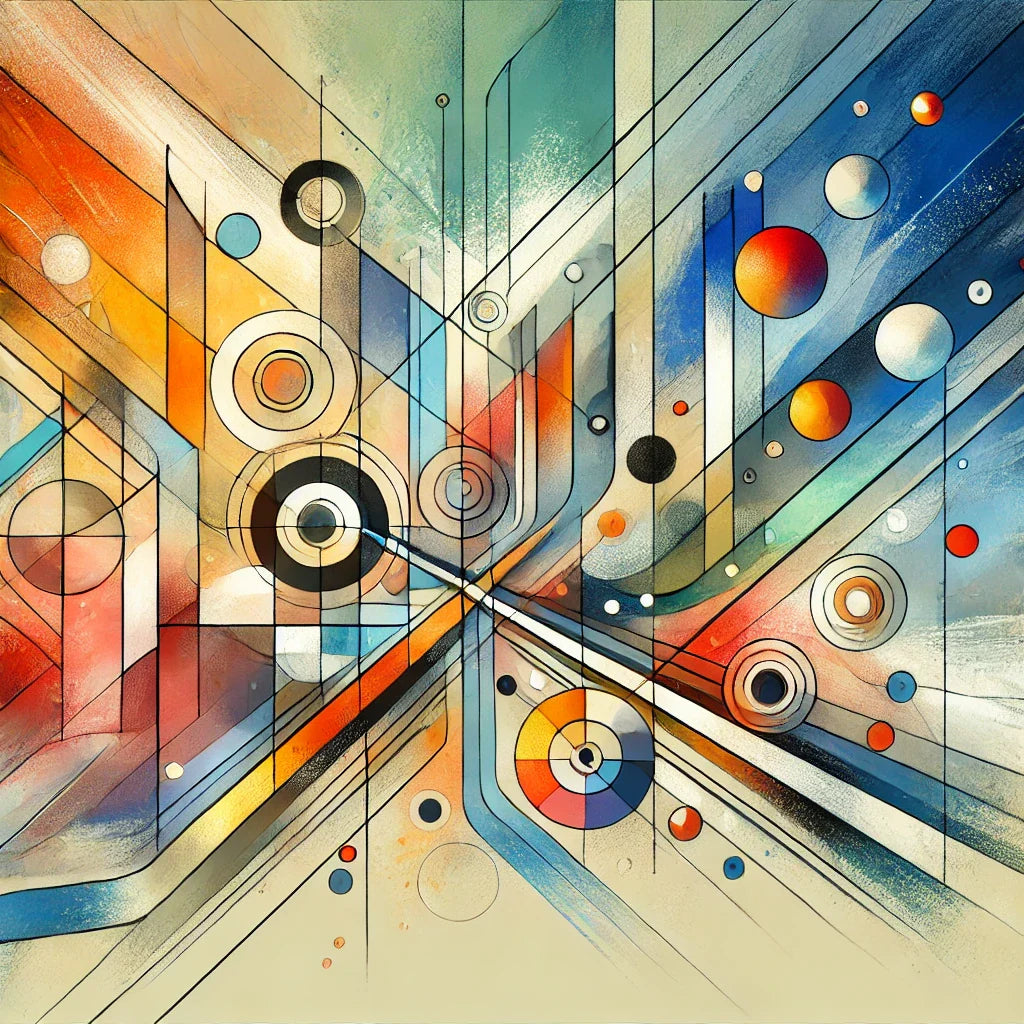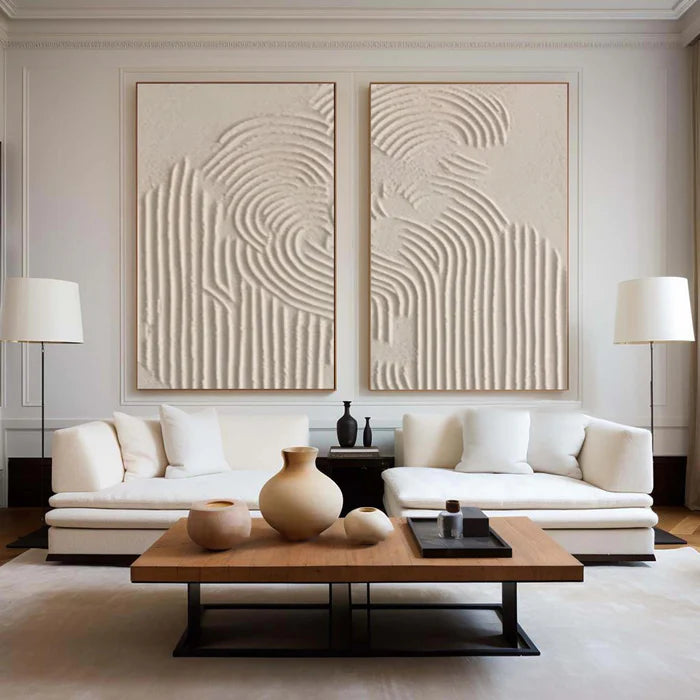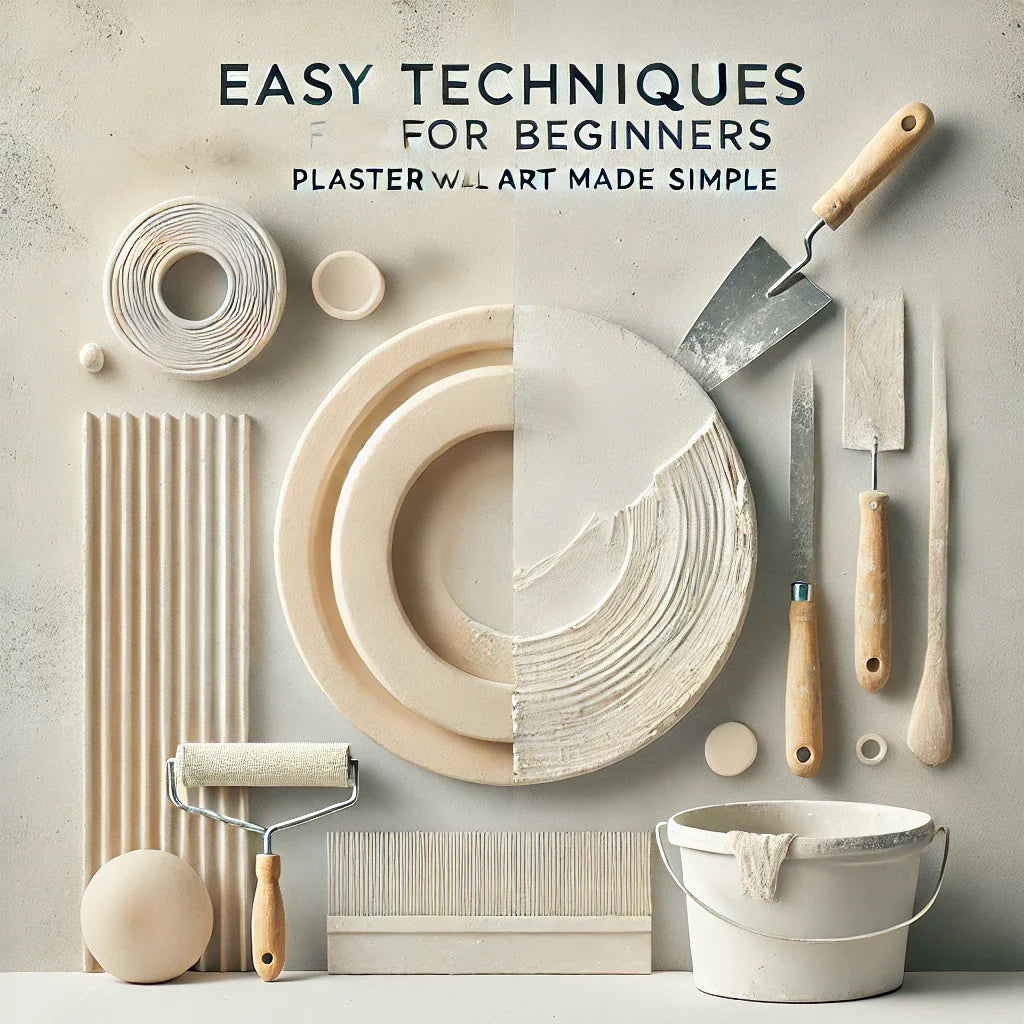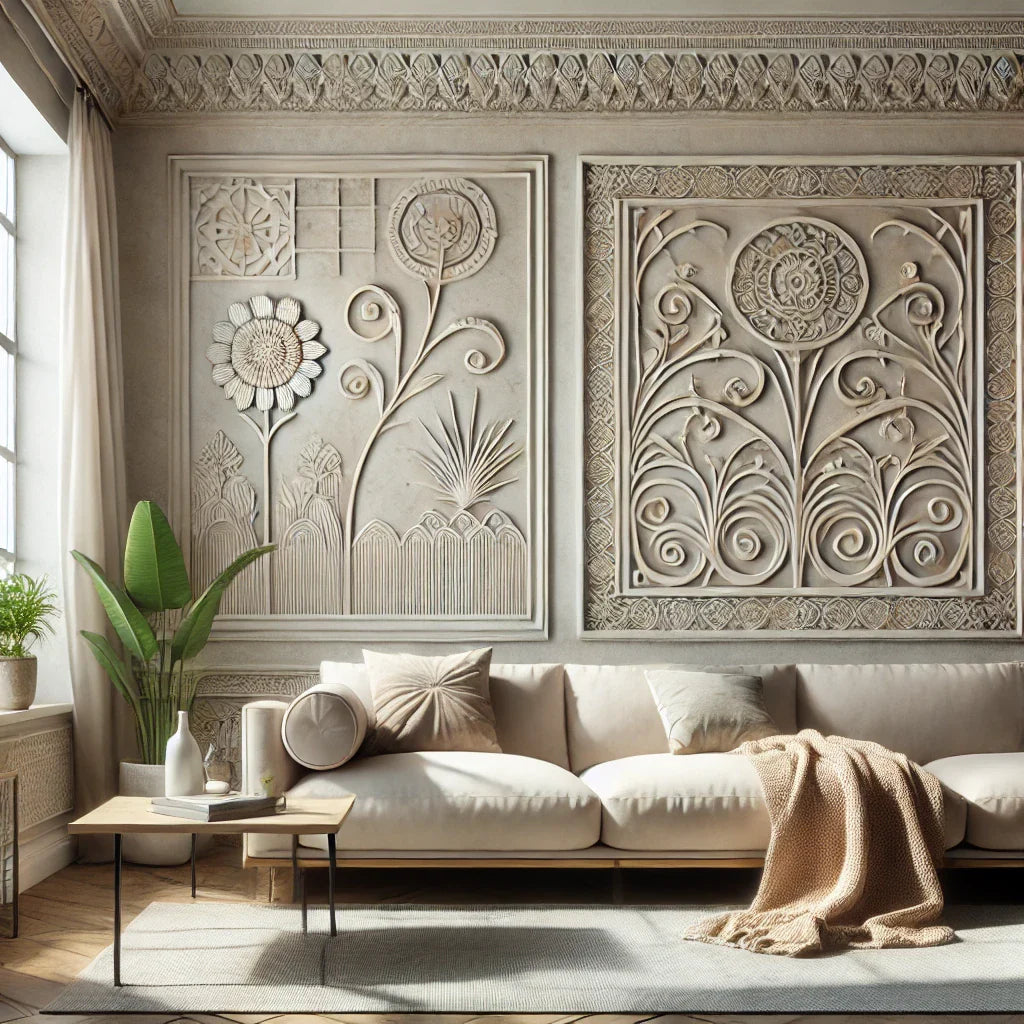
The Evolution of Abstract Art: From Kandinsky to Modern Minimalism
Abstract art moves away from depicting things as they appear. Instead, it focuses on shapes, colors, and forms. It allows artists to express emotions and ideas through visual elements, not reality. Have you ever looked at a painting and felt something without knowing exactly what it was about? That’s the power of abstract art. It makes you think. It makes you feel. Abstract art emerged in the early 20th century. It challenged traditional art forms that aimed to replicate the world around us.
Are you ready to dive into this world of free expression? Abstract art offers a space to experience art beyond the ordinary. It's about the feeling and the connection, not just what’s on the canvas.
Let’s explore the Evolution of Abstract Art from Kandinsky to modern Minimalism in depth.
The Origins of Abstract Art
No doubt—Abstract art emerged in the early 20th century as a break from traditional art forms. Artists wanted to explore emotions, ideas, and the essence of things rather than just replicating reality. The movement began as a reaction to the realism that had dominated for centuries.
Did you know—Wassily Kandinsky played a key role in shaping abstract art. He believed that art should express feelings and thoughts, not just the visible world. Kandinsky used shapes, colors, and lines to create visual representations of emotions. His goal was to communicate beyond the physical world. Do you think art should be limited to what we see, or can it represent deeper experiences?
Other artists embraced this idea. They too moved away from realistic depictions. Abstract art opened the door for different approaches to creativity. It allowed artists to be more personal and experimental. As the movement grew, it changed the way people viewed art.
What do you think? Does abstract art allow for more freedom in expression than traditional forms?
Key Movements in Modern Abstract Art
You can see that—several movements in abstract art changed how we see the world. These movements pushed boundaries and offered new ways to express ideas. Each brought something different to the table.
Cubism stood out as one of the first to break traditional rules. Artists like Pablo Picasso and Georges Braque fragmented objects into geometric shapes. They showed multiple perspectives in one image. Have you ever wondered how different angles can alter your perception of something familiar?
Futurism arrived next, aiming to capture speed and motion. Artists such as Umberto Boccioni expressed the energy of modern life. They focused on movement and the changes brought by technology. Do you think art can truly capture the feeling of speed and progress?
Abstract Expressionism followed. It emphasized emotional expression through art. Artists like Jackson Pollock and Mark Rothko used bold colors and dynamic forms to express deep emotions. Can you connect with the raw energy in their works, or does it feel too intense?
Finally, Minimalism reshaped how we view simplicity. Artists like Donald Judd and Frank Stella stripped art down to its basic forms. You can say—their works focused on geometric shapes and clean lines. Does the simplicity of minimalism appeal to you, or do you miss the emotion found in other styles?
The Rise of Abstract Expressionism and Its Influence
Abstract Expressionism shook the art world in the 1940s and 1950s. Artists sought to break away from tradition. They wanted to express raw emotion and freedom through their art. Can you imagine what it was like to witness such a dramatic shift?
Jackson Pollock and Willem de Kooning led the movement. Pollock, in particular, made a mark with his drip paintings. His works seemed chaotic yet controlled at the same time. The energy in his paintings makes them feel alive. Do you feel the emotion in his pieces when you look at them?
Abstract Expressionism didn’t stop there. It influenced many other art movements. Conceptual Art, Pop Art, and Minimalism all drew from its ideas. What do you think of the lasting impact it had on modern art?
New York City became the epicenter of this revolution. Artists from all over the world gathered there. The city became a hub of innovation. Did the city's energy play a role in fueling the movement?
Abstract Expressionism redefined what art could be. It was not just about technique. It was about feeling, spontaneity, and self-expression.
How has this freedom shaped art today?
Colorful Abstract Art

Color brings life to abstract art. It can evoke emotions and tell a story. Artists use color to make strong visual statements. Have you ever been drawn to a piece because of its vibrant palette?
However, some artists experiment with how colors work together. They play with contrasts and harmonies. Colors like blue and yellow can calm, while red and orange spark energy. How do the colors in a painting make you feel?
Mark Rothko’s work shows how color can create an emotional impact. He used large fields of color to invite deep reflection. You can almost feel the colors pulling you in. Do you find yourself lost in such pieces?
Wassily Kandinsky took it further. He believed color had sound. Red could be a loud beat and blue was soothing. Can you imagine listening to the colors in a painting?
Colorful abstract art is more than decoration. It’s a language that connects to the soul. Each brushstroke and hue holds meaning.
What do you think the colors in a work are trying to say?
Blending Abstract and Landscape Art
Abstract and landscape art create a powerful mix. Artists use abstract techniques to capture nature’s essence. Instead of realistic representations, they focus on emotions and energy. Have you ever wondered how an abstract landscape can make you feel closer to nature?
If artists blend these styles, they break away from the ordinary. Landscapes are reimagined using colors, shapes, and lines. The result can be surprising and thought-provoking. How does it change the way you see a familiar scene?
The blending of abstract art and landscapes gives freedom to both the artist and the viewer. Its shapes may replace mountains, and colors could replace the sky. This opens up endless interpretations. Do you prefer seeing the world as it is, or do you enjoy the imaginative twist of abstract landscapes?
Moreover, Painters like Georgia O'Keeffe showed how this blend could work. Her work doesn't mimic the desert but instead reveals its spirit. You might see a landscape, but the abstract elements let you feel it. What do you think of that shift in perspective?
If you are combining abstract and landscape art, it is more than just a technique. It's about rethinking the world around you. Does it inspire you to look at nature differently?
Why Buy Abstract Art Online?
If you are buying abstract art online, it comes with plenty of benefits. You can browse countless styles from various artists. No need to visit galleries. Why not discover new pieces from the comfort of your home?
- Online platforms showcase a wide range of artists. You’ll find established names and up-and-coming talents. Are you looking for something unique? You might stumble upon the perfect piece that isn’t available locally.
- Convenience is key. You can take your time to view art whenever you want. No sales pressure. Doesn’t that make the process more enjoyable?
- Online shopping also allows for easy price comparisons. You can find art that fits both your style and budget. Why settle for less when you have options?
It is important to secure shipping to ensure your artwork arrives safely. No need to worry about damage during transport. Isn’t it reassuring knowing your purchase will arrive in perfect condition?
No doubt—if you are buying abstract art online provides variety, convenience, and access to exclusive pieces.
Ready to add a new artwork to your collection?
How to Incorporate Abstract Art Into Your Living Space?
Abstract art can instantly change the look of any room. It adds personality and depth. You should start by choosing a piece that fits the vibe of your space. Do you want something bold and dynamic or something calming?
You should also consider the size of the artwork. Large pieces create a powerful statement. Smaller artworks work best in cozy, intimate areas. Where would you like to draw attention in the room?
Think about where you place the artwork. Hanging it above the sofa or near the entrance works well. It grabs attention right away. Where do you spend most of your time in the room? That could be a great spot.
It is important to—match the art to your furniture. You don’t need perfect symmetry. A piece of abstract art stands out when it contrasts with the surrounding decor. How will the colors in the artwork work with your furniture?
You should—choose the right frame. It should enhance the artwork, not overpower it. A sleek frame suits modern abstract art. A thicker or more textured frame can add a unique touch. What kind of frame best suits your art piece?
Abstract art brings a fresh, modern touch to any home.
Ready to start experimenting? Think about how it can reflect your style and enhance your space.
Conclusion
Abstract art adds personality to your space. It transforms walls into a conversation starter. You can explore endless options and choose art that resonates with you. Why settle for the ordinary when you can bring creativity to life? Express yourself through abstract art. It’s not just decoration; it’s an experience.
Ready to find that perfect piece for your space? Embrace the unique style abstract art offers.
FAQs
How do I match abstract art with my home decor?
You have to choose artwork that complements your room's color palette and design. Abstract pieces can either blend in subtly or serve as bold focal points that contrast with your decor.
Is it easy to find affordable abstract art online?
Yes, there are plenty of online platforms that offer affordable abstract art. You may look for emerging artists or prints that allow you to enjoy beautiful artwork without the high price tag.
What type of abstract art is best for a minimalist space?
Simple, clean designs with muted colors work well in minimalist spaces. Geometric or monochromatic abstract art can seamlessly integrate into a minimalist aesthetic.
Can abstract artwork in smaller spaces like apartments?
Yes, Even in small spaces, abstract art can make a big impact. You can choose smaller pieces or create a gallery wall to maximize the visual appeal without overwhelming the room.
What should I consider before purchasing abstract art online?
Make sure to check the artist’s background, the art’s size, and the return policy. Also, consider the art’s shipping and framing options to ensure it fits perfectly in your home.



